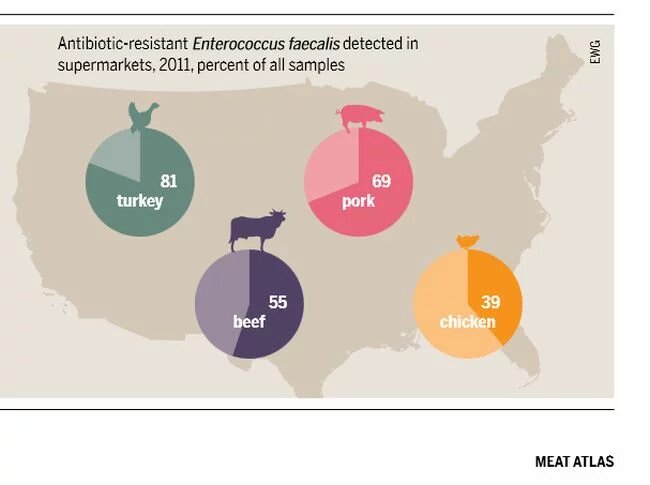
Food is a necessity. Food is personal. Food also has political and ethical dimensions that continually pose new questions about responsibility.
We are more and more alienated from what is on our plates. Responsible food production and consumption is being demanded by an increasing number of people. Consumers need information with which to answer their questions and inform their decisions.
The way in which we produce and consume meat affects many aspects of our lives and our environment: health, animal protection, food safety, agriculture, trade, environment and climate impacts are only some of these dimensions. Our new publication, the Meat Atlas 2014, describes and illustrates these relationships.
The Meat Atlas looks at topics such as how the world’s bestselling herbicide, Glyphosate, has been traced in the human body, and how the widespread use of pharmaceuticals by industrial producers is creating “superbugs,” bacteria that have developed resistance to drugs that are vital to treat disease in humans.
The report also outlines the impact of intensive meat and dairy production on freshwater usage and land. Worldwide agriculture consumes 70% of available freshwater, one third of which goes towards raising livestock. The increasingly intensive livestock sector is also one of largest consumers of land and edible crops, with more than 40% of the global annual output of wheat, rye, oats and maize used for animal feed. Barbara Unmüßig, President Heinrich Böll Foundation, points out that “after China, Europe is the biggest importer of soya […] and it’s being fed almost exclusively to the animals we slaughter. Rising meat consumption is forcing up land prices. […] Nearly a third of the world’s land is being used to grow animal feed. Meanwhile, small farmers are losing their land and their livelihoods. That schnitzel on our plates jeopardizes the food security of many people in the global South."
The Meat Atlas sheds light on "Big Business" meat in Europe, across the United States, and in the emerging economies of China and India. With this publication, we aim to catalyze the debate over the need for better, safer and more sustainable food and farming.
--
The material in the Meat Atlas is available under a Creative Commons license. Please attribute all texts and graphics as follows: CC-BY-SA Friends of the Earth Europe, Heinrich Böll Foundation.
To download publication graphics, go to www.boell.de/meat-atlas. For the German Fleischatlas, Fleisch-App and graphics, go to www.boell.de/fleischatlas.